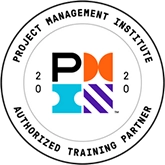What Leadership Is... and Isn't
Leadership  is natural and easy for some, and a struggle for others. Leadership has many dimensions such as inspiration, courage, integrity, and accomplishment.
is natural and easy for some, and a struggle for others. Leadership has many dimensions such as inspiration, courage, integrity, and accomplishment.
Learning leadership is like learning the alphabet. In kindergarten, my kids learned the alphabet with the letter people, for example "Mr. H" introduced them to the words "house," "hidden" and "how." Each letter person had a different personality. Some letters were easy to learn, easy to speak, easy to understand and easy to write. Learning some was very difficult.
"Mr. S" was a challenge for my son Mike to say. It took many years of physically training his tongue before he learned to pronounce the letter "S." My son Kevin’s difficulty was in writing the letters. His teachers gave up trying to teach him to write legibly and allowed him to use computers for all written assignments. Then there was that new letter my son discovered, "elameno," which upon further analysis was revealed to be four individual letters "L," "M," "N," "O." I still struggle, myself, with how I string words together and my tendency to speak too fast. Knowing the ABC’s of leadership is the required foundation of great leaders. For some it may just come naturally, and for others it has to be deliberately learned.
Leadership is a big, nebulous word. It can be a fearful concept that scares people. Some leaders don’t acknowledge themselves as leaders; rather they feel like they are just doing what needs to be done in that moment. Leadership is many different things to different people and cultures.
 When I ask international students (non-USA) what they think about leaders or leadership, the word they always use is "charisma," someone larger than life, someone you can’t ignore when they enter a room. When coaches discuss leadership they gravitate toward qualities like personal presence, passion and authenticity.
When I ask international students (non-USA) what they think about leaders or leadership, the word they always use is "charisma," someone larger than life, someone you can’t ignore when they enter a room. When coaches discuss leadership they gravitate toward qualities like personal presence, passion and authenticity.
Leadership is about change, whether it’s personal or professional, small or large. Leadership is about moving toward something, and creating something that didn’t exist before. The opposite of leadership is staying within the limitations of the status quo, keeping things the same, staying where you are, in the same way that you have been. Some form of leadership is required if you, your team, your family, your community, or your company intends to do things differently — creating a different environment or achieving new results. Leadership requires being different or doing something differently. It requires change. Change can be messy, chaotic and very uncomfortable. It’s comforting to know, though, that effective personal and professional leadership can be learned.
There is no one magic formula that applies to all. Each person’s leadership style is as unique and as individual as they are. This makes it very difficult to teach leadership and apply leadership models to everyone and think they will work. Mimicking someone else’s style might be useful in the short run, yet it is missing the uniqueness and strength of the individual who is "trying it on for size." For this reason, the leadership style hasn’t been integrated as "one’s own." Trying to apply a leadership theory meant for a manufacturing line to a cutting-edge new product in a different industry probably won’t work either. Each person creates his or her own unique leadership style that changes and that hopefully gets better as they go along.
The choice to be a leader is sometimes made intentionally and sometimes forced onto a person by circumstance. I have noticed people who are very strong leaders in one aspect of their lives, yet who may not necessarily have that strength in other aspects.cIt is a lifelong path to develop and expand your leadership style.
Leadership Is Not…
- Leadership is not following – knowing how to be a great follower is something all leaders must understand.
- Leadership is not saying “Yes” to everything – leaders know how to say “No”.
- Leadership is not doing the same thing over and over – leaders know how to move in other directions to get the job done.
- Leadership is not keeping things as they are because it’s easy and because things have always been done that way – leaders know how to do things differently in order to get desired results.
- Leadership is not avoiding conflict at all costs, either being in denial that it exists or giving up because it’s too difficult to manage – leaders know how to resolve, accept, or move through conflict.
About the Author
Star Dargin, PCC, CPCC, is a Trainer and Consultant for Corporate Education Group. Star is also the founder of Star Leadership LLC, a management consulting firm that offers coaching, training, and consulting services for businesses. Star’s client experience includes numerous industries, small businesses, learning institutions, state agencies, and independent workers. Star has also held leadership positions at several high-tech companies, in roles such as Director of Engineering, Director of Project Managers, and International Program Manager; additionally, Star is an adjunct professor at Boston University where she teaches graduate level courses on Leadership and Communication Skills for Project Managers.
For more information on this topic, as well as how Corporate Education Group can help power your organization’s performance, contact us via email or call 1.800.288.7246 (US only) or +1.978.649.8200. You can also use our Information Request Form!


- ©2025 Corporate Education Group, operated by CEG Operating Company, LLC. All Rights Reserved.
Privacy Policy | Terms and Conditions - Corporate Education GroupSM and Learning That Powers PerformanceSM are service marks of Corporate Education Group, Inc., PMI®, PMP®, CAPM®, PgMP®, PMBOK®; and the PMI®; Registered Education Provider logo are registered trademarks of the Project Management Institute, Inc. CBAP® and IIBA® are registered trademarks of International Institute of Business Analysis. All other trademarks mentioned on this site are property of their respective owners. All rights reserved. CEG is an approved Authorized Partner within the Blanchard Authorized Partner Program and is licensed to market, sell, and train SLII®.
